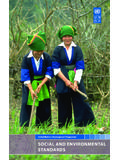Transcription of Community Participation in Education - World Bank
1 Community Participation in Education : What do we know? 1999. Prepared by Mitsue Uemura for Effective Schools and Teachers and the Knowledge Management System HDNED, The World bank Table of Contents Introduction 1. Part One: Literature Research on Community Participation in Education 1. What is Community ? 1. What is Participation ? 2. What is Community Participation in Education ? 4. What can Community Participation in Education do? 4. How can Community Participation improve Education ? 9. How can Community Participation support teachers? 9. What are challenges? 10. What needs to be done in order to improve the practices? 11. Part Two: Examination of World bank Practices in Community Participation in Education 15. Methodology 15. Examination of eight World bank projects 15. Chad: Basic Education Project ( Education V) 15. Ghana: Community Secondary Schools Construction Project 16.
2 Malawi: Primary Education Project 17. Tanzania: Human Resources Development Pilot Project 18. Bolivia: Education Reform Project 21. Dominican Republic: Primary Education Development Project 22. EDUCO: Basic Education Modernization Project in El Salvador 23. Honduras Basic Education Project 25. Brief profile of 15 other World bank Education projects 26. Conclusion 32. Bibliography 32. Annex 1: General information of 23 projects reviewed 35. Annex 2: Summary of 23 World bank Education projects with Community Participation components 36. Introduction Policymakers, educators, and others involved in Education are seeking ways to utilize limited resources efficiently and effectively in order to identify and solve problems in the Education sector and to provide quality Education for children. Their efforts have contributed to realizing the significance and benefits of Community Participation in Education , and have recognized Community Participation as one of the strategies to improve educational access and quality.
3 This is not to say that Community Participation is something new in the Education delivery, however. It did not suddenly appear as panacea to solve complex problems related to Education . In fact, not all communities have played a passive role in children's Education . For instance, Williams (1994). stresses that until the middle of the last century, responsibility for educating children rested with the Community . Although there still are places where communities organize themselves to operate schools for their children today, Community Participation in Education hasn't been fully recognized nor extended systematically to a wider practice. Increasing amounts of research on this topic have been conducted since the late 1980s, and there are more and more resources becoming available. In preparing and implementing any efforts to promote Community involvement in Education , it is important to understand the whole picture of Community Participation : how it works; what forms are used; what benefits it can yield; and what we should expect in the process of carrying out the efforts.
4 A deeper understanding of this issue is important since the link between Community involvement and educational access and quality is not simple and involves various forms. This paper attempts to summarize these issues, by turning to existing literature. It also aims to examine the World bank 's practices on Community Participation in its Education projects by scrutinizing 23 educational projects which were identified by utilizing ImageBank and studying Staff Appraisal Reports 1 . This study is designed to serve as a resource for bank staff and clients who seek deeper understanding of Community Participation in Education in order to enhance their work in this field. Part One: Literature Research on Community Participation in Education Before turning to literature research on Community Participation in Education , it is important to look at and clarify some terminology.
5 What is Community ? Communities can be defined by characteristics that the members share, such as culture, language, tradition, law, geography, class, and race. As Shaeffer (1992) argues, some communities are homogeneous while others are heterogeneous; and some united while others conflictive. Some communities are governed and managed by leaders chosen democratically who act relatively autonomously from other levels of government, and some are governed by leaders imposed from above and represent central authorities. Zenter (1964) points out three aspects of communities. First, Community is a group structure, whether formally or informally organized, in which members play roles which are integrated around goals 1. It is not intended to exclude other bank Education projects that focus on Community Participation in Education . In fact, readers encouraged to keep in mind that there are some besides the ones examined in this study.
6 1. associated with the problems from collective occupation and utilization of habitational space. Second, members of the Community have some degree of collective identification with the occupied space. Lastly, the Community has a degree of local autonomy and responsibility. Bray (1996) presents three different types of communities, applied in his study on Community financing of Education . The first one is geographic Community , which is defined according to its members' place of residence, such as a village or district. The second type is ethnic, racial, and religious communities, in which membership is based on ethnic, racial, or religious identification, and commonly cuts across membership based on geographic location. The third one is communities based on shared family or educational concerns, which include parents associations and similar bodies that are based on families' shared concern for the welfare of students.
7 What is Participation ? The term Participation can be interpreted in various ways, depending on the context. Shaeffer (1994) clarifies different degrees or levels of Participation , and provides seven possible definitions of the term, including: involvement through the mere use of a service (such as enrolling children in school or using a primary health care facility);. involvement through the contribution (or extraction) of money, materials, and labor;. involvement through attendance' ( at parents' meetings at school), implying passive acceptance of decisions made by others;. involvement through consultation on a particular issue;. Participation in the delivery of a service, often as a partner with other actors;. Participation as implementors of delegated powers; and Participation in real decision making at every stage, including identification of problems, the study of feasibility, planning, implementation, and evaluation.
8 Shaeffer stresses that the first four definitions use the word involvement and connote largely passive collaboration, whereas the last three items use the word Participation instead, implying a much more active role. Shaeffer further provides some specific activities that involve a high degree of Participation in a wider development context, which can also be applied in the Education sector, including: collecting and analyzing information;. defining priorities and setting goals;. assessing available resources;. deciding on and planning programs;. designing strategies to implement these programs and dividing responsibilities among participants;. managing programs;. monitoring progress of the programs; and evaluating results and impacts. What is Community Participation in Education ? Education takes place not only in schools but also within families, communities, and society.
9 Despite the various degree of responsibilities taken by each group, none can be the sole agent to take 100 %. responsibility for educating children. Parents and families cannot be the only group of people for children's Education as long as their children interact with and learn from the World outside their families. Communities and society must support parents and families in the upbringing, socializing, and educating of their children. Schools are institutions that can prepare children to contribute to the 2. betterment of the society in which they operate, by equipping them with skills important in society. Schools cannot and should not operate as separate entities within society. Since each group plays a different role in contributing to children's Education , there must be efforts to make a bridge between them in order to maximize the contributions. Education takes place most efficiently and effectively when these different groups of people collaborate.
10 Accordingly, it is important to establish and continuously attempt to develop partnerships between schools, parents, and communities. Many research studies have identified various ways of Community Participation in Education , providing specific channels through which communities can be involved in children's Education . Colletta and Perkins (1995) illustrate various forms of Community Participation : (a) research and data collection; (b) dialogue with policymakers; (c) school management; (d) curriculum design; (e). development of learning materials; and (f) school construction. Heneveld and Craig (1996) recognized parent and Community support as one of the key factors to determine school effectiveness in Sub-Saharan Africa. They identify five categories of parent and Community support that are relevant to the region: (1) children come to school prepared to learn; (2).















